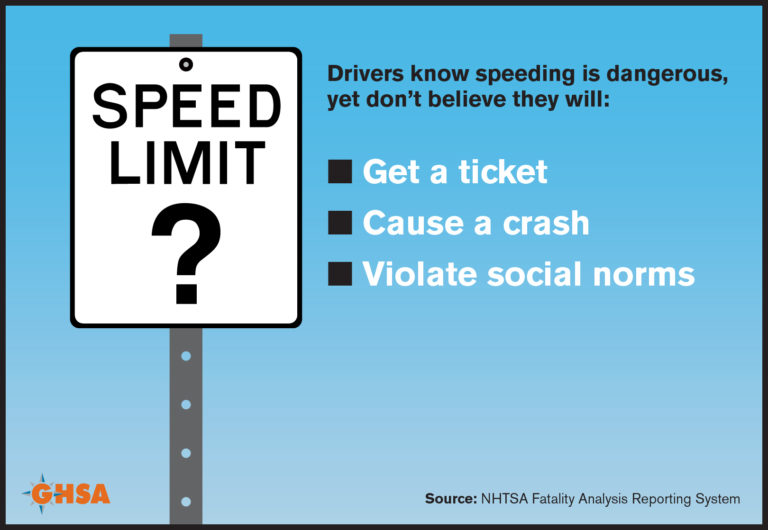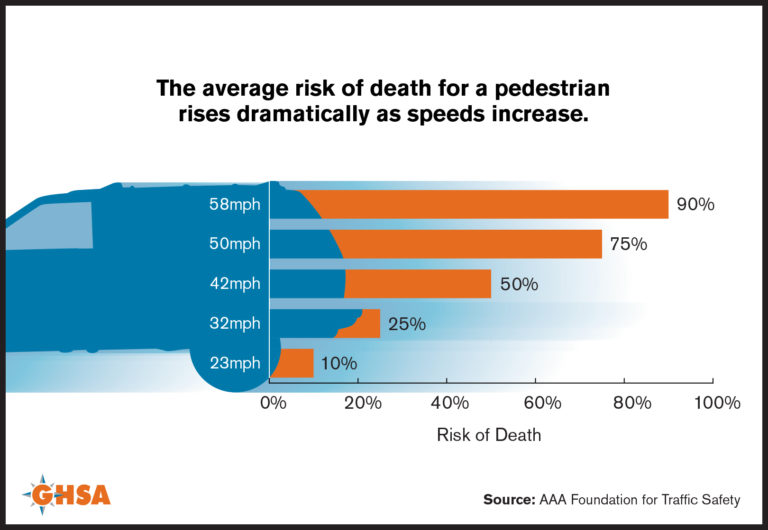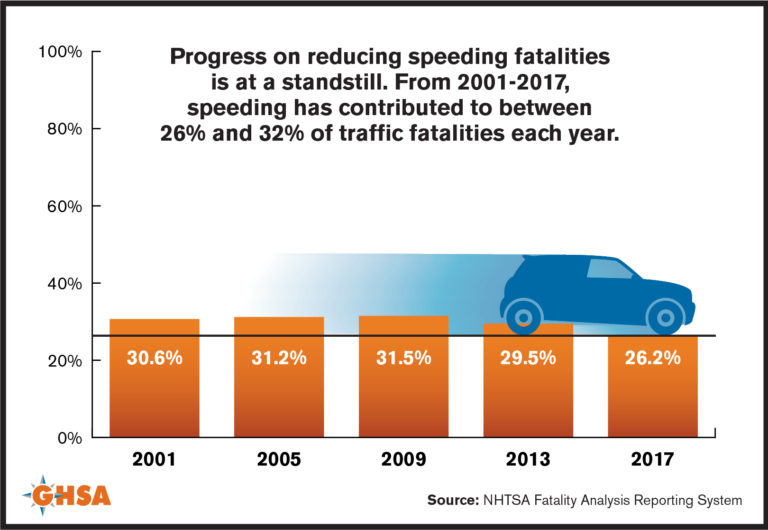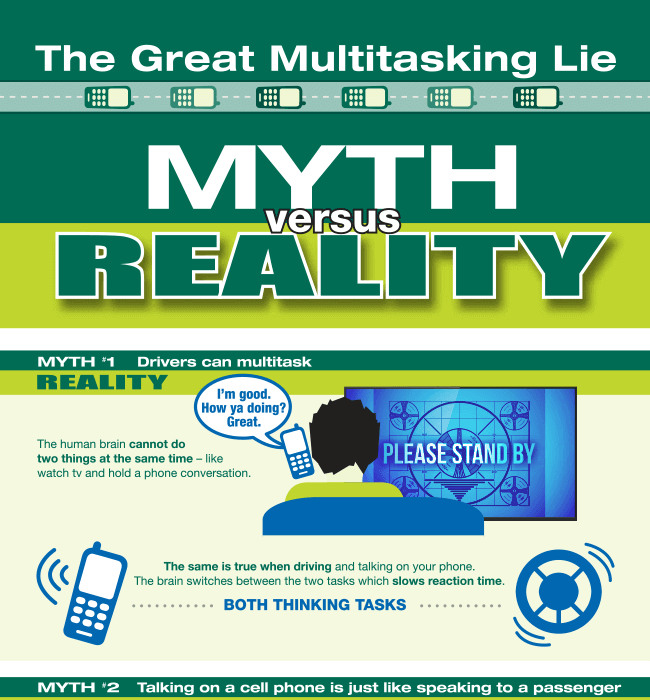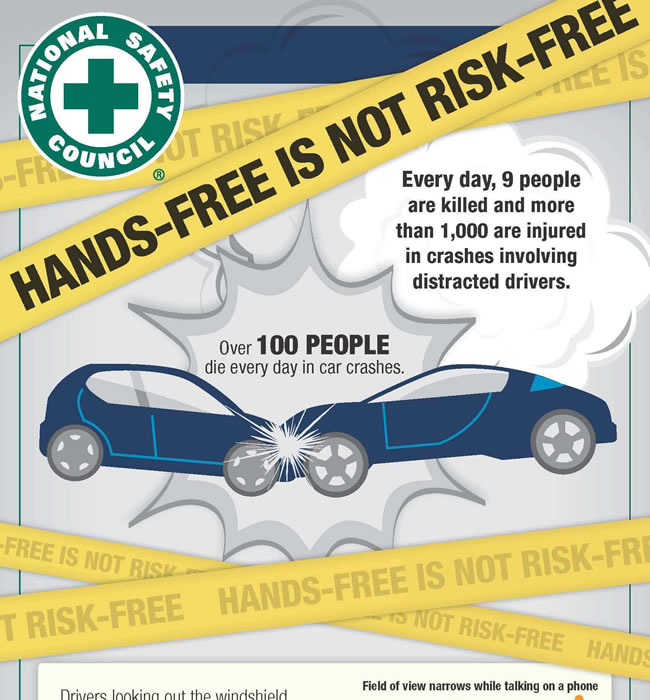Healthy Vehicles
Did You Know?
Vehicle health plays a significant role in driver wellness.
Vehicle health plays a significant role in driver wellness. Keeping vehicles in top working condition through regular maintenance, awareness of safety features, and avoiding risky driving behaviors reduces the risk of being involved in a crash.
The following section contains information regarding vehicle maintenance including proper ergonomics in the vehicle, and healthy driving habits. Workplace materials for each of these elements are provided for employers to educate employees, including suggested actions employers can take to help their employees to achieve a higher level of vehicle health.
Vehicle Maintenance

Driving a “healthy vehicle” is a critical component of driver wellness. Following a regular vehicle maintenance schedule, checking and responding to vehicle recalls, and understanding the new technology in your vehicle and how it works can help to ensure a safe ride.
Keeping a regular maintenance schedule plays a significant role in keeping vehicles road-worthy, providing a safe ride for drivers and their passengers, and reducing the risk of crashing. In addition, a regularly maintained vehicle not only ensures that the vehicle is functioning properly, but it also increases fuel economy and is better for the environment.


Although drivers should always refer to their vehicle handbook regarding regular maintenance specific to their vehicle, manufacturer recommendations for vehicle maintenance generally include:
- Regularly checking headlights, taillights, directional signals and interior lights.
- Keeping the windshield clean, checking for cracks and dings in the windshield, and replacing worn windshield wipers.
- Making sure the mirrors are clean and can be properly adjusted.
- Tire tread is sufficient, and tires are rotated as needed.
- Wheels are correctly aligned and balanced.
- Spare tire is viable and tools to replace a tire if needed are readily accessible.
- Tire pressure is adequate.
- Tires are free of embedded objects that can cause leaks and reduction in air pressure.
- Oil changes as recommended by the manufacturer.
- Regular tune ups including checking belts, hoses, and clamps.
- Emissions inspections as recommended by the manufacturer.
- Brake inspections and changes as needed.
Safety Recalls
The National Highway Traffic Safety Administration (NHTSA) issues vehicle safety standards and requires manufacturers to recall vehicles and equipment’s that have safety-related defects. Identifying whether your vehicle has a recall notice for potential safety issues is important in keeping your vehicle road worthy and keeping drivers safe. NHTSA has a dedicated webpage to check for vehicle safety issues and recalls. Here the vehicle year, make, and model are required. NHTSA also provides information regarding the vehicle identification number (VIN) and how to enter the VIN to identify an unrepaired vehicle affected by a vehicle safety recall in the past 15 calendar years or vehicle safety recalls.

Technology and safety features
Technology in the vehicle is advancing by leaps and bounds. Currently several safety features can be found in newer vehicles including:
- Seatbelt reminders
- Warnings regarding interaction with cell phones and other distracting vehicle features
- Ex. manipulating a touch screen device in the vehicle while in motion, do not disturb options with cell phone use
- Front crash prevention
- Lane departure warning and lane departure prevention
- Blind spot detection
- Rear crash prevention
- Various levels of automation
Driving a vehicle with these technologies can reduce the risk of a crash. However it is important to read the driver manual to understand how these features work and how to acknowledge and/or respond to these features when they are enabled. See Choosing the Safest Vehicles for Your Employees for more information on the benefits of these safety features for employees. For detailed information regarding technology and safety features in the vehicle visit MyCarDoesWhat.org.
Ergonomics
According to the Canadian Center for Occupational Health and Safety (CCOHS), the same practices that can help avoid aches and pains at your desk can be applied to your drive to and from work.


To avoid aches and pains especially when driving long distances or for long hours CCOHS recommends the following:
- Adjust your seat so you can easily reach the pedals and controls. You should be able to reach the steering wheel without stretching your arms.
- Raise the steering wheel if your legs or knees bump it while driving.
- Keep the backrest at shoulder height so it doesn’t interfere with your rearview vision.
- Adjust the headrest so it’s as high as – but not lower than about 2.5 inches from – the top of your head.

Get the Facts!
- Vehicle maintenance is critical to vehicle crashworthiness.
- Regularly maintaining your vehicle reduces the risk of crashing.
- Regularly checking to and responding to recalls eliminates the risk of crashing due to manufacturer defects and safety issues identified by NHTSA.
- Knowing how safety features in your vehicle work and how to respond/react to these features will allow for a safer ride.
- Ergonomics in the vehicle can have an impact aches and pains due to driving for long distances or duration of time in the vehicle. Properly adjusting your seat, steering wheel, backrest and headrest can reduce the incidence of these types of aches and pains while driving.
Seasonal changes:
- Vehicle maintenance includes preparing for the change in seasons and potentially driving during inclement weather. Extra time is needed to drive under these conditions.
- Autumn is a time when children are back in school and school buses will be on the roadway during commuter times. Also allow for extra time on the road during the school year.
- Falling leaves can cause or hide roadway problems. Leaves can be slick when wet and can hide potholes and other roadway dangers. Drivers should use caution when driving with wet leaves on the roadway similar to when driving on icy or muddy surfaces.
- Daylight Savings Time ends in the fall. This leads to more people driving in the dark. 50 percent of traffic deaths occur at night. Extra care should be taken at this time.
- Driving with snow on top of the vehicle is a punishable offense in some states, and can pose a danger to those drivers around you. Be sure to clean your vehicle free of ice and snow in the wintertime.
Preparing for winter driving:
- Only drive in the snow if necessary. When necessary, drive slowly and adjust the vehicle speed to account for ice and snow.
- Increase the following distance to provide longer stopping distance and time.
- Be sure brakes are in good working condition.
- Check the windshield wipers, make sure they are in good condition.
- Change the tires to snow tires where applicable.
- Adjusting your vehicle’s seat and mirrors can reduce aches and pains from long drives or prolonged time in the vehicle.
- Checking the battery in your vehicle to ensure it has sufficient battery life is important when preparing for winter. Freezing temperatures slow chemical reactions in batteries. In addition, extreme cold increases a batteries rate of discharge reducing the ability to hold a charge.
- Portable battery jump starters should always be kept in the vehicle.
- Although all-season tires operate well throughout the year, winter tires driven on snow and ice were found to outperform all season tires in these conditions. When comparing the two, winter tires had a substantial advantage, especially when striking during braking and cornering, when snow tires improved performance by up to 5 percent and 20 percent, respectively.

Vehicle Maintenance Materials for the Workplace
Click on the following to download Vehicle Maintenance educational materials:
Fact Sheet
Video
Resources
Healthy Driving Habits
Exhibiting physical wellness, maintaining a healthy work-life balance, being aware of the risks of impaired driving and always driving sober, and having a healthy vehicle are all important components of safe driving on our roadways. However, a driver can exhibit all these components but if drivers execute risky driving behaviors when behind the wheel, the risk of crashing significantly increases.

Seat Belt Use
Federal regulations and most state laws require drivers to wear seat belts. The safest choice drivers and passengers can make is to buckle their seat belt every ride. Even in the back seat. According to a new survey conducted by the Insurance Institute for Highway Safety (IIHS), 4 out of 5 respondents say short trips or traveling by taxi or ride-hailing service are times they don’t bother to use the belt because they perceive the back seat to be safer than the front. Seat belts are the best defense against risky drivers on the roadway no matter where you are seated in the vehicle. The Governors Highway Safety Association recently released a study on rear seat belt use that points to the unnecessary deaths of unrestrained back seat passengers.
Seat belts keep drivers and passengers from injuring other passengers in the vehicle and being ejected from the vehicle in a crash. Many drivers assume an airbag will save them in the event of a crash. Airbags deploy with great force and are intended to be used in conjunction with wearing a seat belt. The force of an airbag deploying when drivers are not wearing their seat belts can cause serious or fatal injuries.
Everyone knows the importance of securing children in the vehicle, but it is equally important to secure pets during driving trips. Often emotional support dogs or service dogs accompany employees in the workplace. They need to be properly secured in the vehicle not only for their protection, but also to protect the driver in the event of a crash since unbuckled occupants become projectiles in the vehicle and can cause harm to buckled occupants.

Speeding
It is commonly known that most drivers speed. This is because the perception of getting caught is low. However, speeding-related fatalities historically comprise approximately one-third of total fatalities in the U.S. This is similar to the number of impaired-driving fatalities on our roadways each year. In a speeding-related crash, there is a greater chance of being injured and the injuries are likely to be more severe or fatal.
Speed limits are increasing on U.S. roadways. In some rural areas across the country, the speed limit is 80 mph. Research has shown that the amount of time saved by speeding is minimal.
Avoiding a crash at these high speeds is difficult and often results in serious and fatal injuries. The Insurance Institute for Highway Safety reports that speed influences the risk of crashes and crash injuries in three ways:
- The distance a vehicle travels from the time a driver detects an emergency to the time the driver reacts is increased.
- The distance needed to stop a vehicle once the driver starts to brake is increased.
- The exponential increase in crash energy. For example, when impact speed increases from 40 to 60 mph (a 50 percent increase), the energy increases by 125 percent.
Research has shown that at high speeds even air bags and seat belts may not be able to save a driver from a crash. It is important that speed limits are followed, however, at times it may be risky to drive the speed limit. In instances of bad weather, when a road is under construction, or segments of roadway that are not well-lit at night, speed should be reduced to accommodate for these conditions. Most state speeding laws account for “traveling above posted speed limit” and “driving too fast for road conditions.” If a driver is going “too fast for road conditions” a law enforcement officer can issue a ticket to the driver for speeding.


Distracted Driving
According to NHTSA, distracted driving is any activity that diverts attention from driving, including talking or texting on your phone, use of other electronic devices, eating and drinking, talking to people in your vehicle, adjusting the stereo, reading, entertainment or navigation system, smoking a cigarette or even interacting with your pet in the vehicle, anything that takes your attention away from the task of safe driving.
Many distractions exist while driving, but cell phones are a top distraction because so many drivers use them for long periods of time each day. Almost everyone has seen a driver distracted by a cell phone, but when you are the one distracted, you often don’t realize that driver is you.
There are three types of distraction:
- Visual – reading a text message, looking up directions, “rubber necking” (i.e., craning one’s neck to get a better view) at a crash site.
- Manual – reaching for things inside the vehicle, using a hand-held device, adjusting the radio, eating or drinking, applying makeup.
- Cognitive – talking on the phone, arguing with a passenger, thinking about your next appointment.
Hands-free devices often are seen as a solution to the risks of driver distraction because they help eliminate two obvious risks – visual, looking away from the road and manual, removing your hands off of the steering wheel. A third type of distraction occurs when using cell phones while driving – cognitive, taking your mind off the road. Hands-free devices do not eliminate cognitive distraction.
Vision is the most important sense for safe driving, yet drivers using hand-held and hands-free phones tend to “look at” but not “see” objects. Estimates indicate that drivers using cell phones look but fail to see up to 50 percent of the information in their driving environment. Distracted drivers experience what researchers call inattention blindness, similar to that of tunnel vision.
Research has shown that using a cellphone while driving increases the risk of crashing.
As a result, several states have implemented texting and/or cell phone bans.
Employers are being held liable for employee distracted driving crashes on company time up to $25 million for employee crashes, even when employees use hands-free devices. Cell phone bans have become common in the workplace. Recently the North Dakota Department of Transportation implemented a statewide cell phone ban while driving a state fleet vehicle by North Dakota State employees. Employers are encouraged to educate employees regarding the risks of driving distracted and to implement a workplace cell phone policy. The National Safety Council provides a Cell Phone Policy Toolkit for employers.


Awareness of Pedestrians and Cyclists
Pedestrian and cyclist fatalities have increased over the last few years. According to NHTSA, there was a 3.4 percent increase in pedestrian fatalities in 2018, the highest since 1990 (6,482 fatalities). In 2018, there was a 6.3 percent increase in cyclist fatalities, the highest since 1990 (859 fatalities).
According to NHTSA, a total of 5,890 traffic crashes had one or more pedestrian fatalities. On average, a pedestrian was killed every 88 minutes in traffic crashes. That is more than 16 people a day, almost 115 people a week. More pedestrian fatalities occurred in the dark (75 percent) than in daylight (21 percent), dusk (2 percent), and dawn (2 percent). Distraction may contribute to the increase in these fatalities. It is important that employers educate employees to look out for pedestrians and cyclists especially when driving at night and to never be distracted while driving.
Heat Stroke
According to KidsAndCars.org, over 940 children have died in hot cars nationwide since 1990. As of November 2019, more than 50 children in 2019 have died of heatstroke because they were left or became trapped in a hot car. Most parents are misinformed and believe that they will never forget their child in a vehicle. Often children are “forgotten” in the vehicle due to a change in schedule or parent responsibility for the child for that day. Children have been left in employee parking lots as a result. In addition, children and pets have been left in vehicles on hot days, not knowing the risks.
The inside of a vehicle heats up quickly. Even with the windows cracked, the temperature inside a car can reach 125 degrees in minutes. 80 percent of the increase in temperature happens in the first 10 minutes. Cracking the windows does not help slow the heating process OR decrease the maximum temperature.
Everyone can play a role in helping to ensure another child death due to being left in a hot car. Awareness of this preventable death including educating employees about hot car deaths can make a difference in saving a life. Children and pets should never be left in a vehicle unattended even with a cracked window or with the engine running. If a child is left unattended in a vehicle, get them out immediately and call 911.
Get the Facts!
Seat Belt Use
- The U.S. National seat belt use rate was at 89.6 percent in 2018.
- Of the 37,133 people killed in motor vehicle crashes in 2017, 47 percent were not wearing seat belts.
- In 2017 alone, seat belts saved an estimated 14,955 lives and could have saved an additional 2,549 people if they had been wearing seat belts.
- If you buckle up in the front seat of a passenger car, you can reduce your risk of:
- Fatal injury by 45 percent (Kahane, 2015)
- Moderate to critical injury by 50 percent
- If you buckle up in a light truck, you can reduce your risk of:
- Fatal injury by 60 percent (Kahane, 2015)
- Moderate to critical injury by 65 percent (NHTSA, 1984)
- 51 percent of male passenger vehicle occupants killed in 2017 were unrestrained.
- There are several myths regarding seat belt use including:
- “Seat belts can trap you in a fire or under water.” Incidents involving fire or water account for ½ of 1% of all crashes. Wearing a seat belt gives you a much greater chance of being conscious and able to escape these type of situations.
- “If you’re operating at a low speed, you don’t need your seat belt.” Most fatal crashes happen within 25 miles from home and at speeds of less than 40 mph.
- “Guys don’t need to wear seat belts; they are less at risk.” Young males are most at risk. Among male passenger vehicle occupants ages 18-34 who were killed in 2017 fatal crashes, 60% were not buckled.
- According to GHSA, in 2018, there were 803 deaths of unbelted rear seat occupants age 8 and older. More than 400 would have survived had they been belted.
Speed
- More than 112,500 people died in speeding-related US highway crashes from 2005-2014.
- The economic cost of speed-related crashes is about $52 billion each year.
- National surveys have reported that on high volume roads 48 percent in 2007 and 72 percent in 2009 exceeded posted speed limits.
- According to NHTSA 27 percent of the total motor vehicle fatalities in 2017 across the U.S. were speeding-related. This accounts for 9,717 fatalities.
- A national telephone survey conducted in 2017 by the AAA Foundation for Traffic Safety reported that half of drivers said they had exceeded the speed limit by 15 mph on a freeway in the past month, and nearly half reported exceeding the speed limit by 10 mph on a residential street.
- The National Transportation Safety Board reported that speeding is one of the most prevalent risky driving behaviors on U.S. roadways, a common factor in motor vehicle crashes, and a causal or contributing factor in 49 major NTSB highway accident investigations since 1967 (NTSB, 2017).
Distracted Driving
- NHTSA estimates that 9 percent of all drivers at any given time are using cell phones.
- In 2017, NHTSA reported 3,166 lives were lost due to distracted drivers.
- The National Safety Council (NSC) estimates about 1 in 4 motor vehicle crashes involve cell phone use at the time of the crash.
- Manipulating a cellphone was a contributing factor in more than 800 crash deaths in 2017.
- National observation surveys indicate the rate of drivers texting at any moment during the day has risen since 2009, especially among younger drivers.
- In 2017, 2 percent of all drivers and 3.9 percent of drivers estimated to be 16-24 years old were observed texting or otherwise manipulating hand-held devices.
- About 10 percent of fatal crashes involve a distracted driver.
Pedestrians and Cyclists Awareness
- There was a 3.4 percent increase in pedestrian fatalities in 2018, the highest since 1990 (6,482 fatalities).
- In 2018, there was a 6.3 percent increase in cyclist fatalities, the highest since 1990 (859 fatalities).
- On average, 17 pedestrians and two cyclists were killed each day in traffic crashes in 2018.
- The number of pedestrians and cyclists killed by large trucks shot up by 9.7 percent.
Heat Stroke
- A child’s body temperature rises three to five times faster than an adult. When a child is left in a hot vehicle, that child’s temperature can rise quickly — and they could die within minutes.
- Heatstroke begins when the core body temperature reaches about 104 degrees.
- A core body temperature of about 107 degrees is lethal.
- In 2018, 53 children died of vehicular heatstroke — the most in more than 20 years — according to NoHeatstroke.org.
- In over 55 percent of these cases, the person responsible for the child’s death unknowingly left them in the vehicle.
- Children have died from heatstroke in cars in temps as low as 60 degrees.


Healthy Driving Habits Materials for the Workplace
Click on the following to download Healthy Driving educational materials:
Fact Sheet
Resources
Fact Sheet
Resources
Infographics
Fact Sheet
Video
Resources
Fact Sheet
Resources
Fact Sheet
Resources
Infographics
NSC
What Employers Can Do

Employers can utilize the materials provided above to promote healthy vehicles in the workplace.
Vehicle Maintenance
- Ensure that fleet vehicles are properly maintained and have regular safety checks.
- Educate employees about the importance of regularly maintaining their vehicle.
- Be aware of and respond to manufacturer recalls for fleet vehicles and educate employees about how to identify if their vehicle has a recall.
- Make employees aware of the newer technology in fleet vehicles and how they work and to be aware of these technologies in their personal vehicles.
- Educate employees about the risks of driving in inclement weather.
- Educate employees and practice safe driving techniques in preparation of seasonal changes and bad weather.
- Ensure that fleet vehicles are prepared for seasonal changes and winter driving and educate employees to do so with their personal vehicles.
Healthy Driving Habits
- Educate employees about the risks of driving unbelted, distracted and speeding.
- Ensure that employees are “buckling-up” properly.
- The lap belt and shoulder belt are secured across the pelvis and rib cage, which are better able to withstand crash forces than other parts of your body.
- Place the shoulder belt across the middle of your chest and away from your neck.
- The lap belt rests across your hips, not your stomach.
- NEVER put the shoulder belt behind your back or under an arm.
- Be aware that bulky winter coats could endanger your child when riding in child safety seats.
- Implement a seat belt policy and cell phone ban in the workplace
- Implement a seat belt workplace campaign: Network of Employers for Traffic Safety (NETS) 2 Seconds 2 Click – 4 week seat belt workplace campaign: https://2seconds2click.org/
- Implement a speed workplace campaign: NETS Drive Safely Work Week Speed Campaign: https://trafficsafety.org/dsww-site/speed-module/
- Implement a distracted driving workplace campaign: NETS Drive Safely Work Week Distracted Driving Campaign: https://trafficsafety.org/road-safety-resources/safe-driving-is-serious-business/
- Educate employees regarding awareness of pedestrians and cyclists including these driving safety tips from NHTSA:
- Look out for pedestrians and cyclists everywhere, at all times. Safety is a shared responsibility.
- Use extra caution when driving in hard-to-see conditions, such as nighttime or bad weather.
- Slow down and be prepared to stop when turning or otherwise entering a crosswalk.
- Yield to pedestrians in crosswalks and stop well back from the cross-walk to give other vehicles an opportunity to see the crossing pedestrians so they can stop too.
- Never pass vehicles stopped at a crosswalk. There may be people crossing that you can’t see.
- Never drive under the influence of alcohol and/or drugs.
- Follow the speed limit, especially around people on the street.
- Follow slower speed limits in school zones and in neighborhoods where children are present.
- Be extra cautious when backing up—pedestrians and cyclists can move into your path.
- Encourage employees to “share the road” and look for cyclists where vehicles do not appear, like before making a left-hand turn at an intersection.
- Download and distribute NHTSA’s “Where’s Baby?” and “Look Before You Lock” material. These assets can be used to educate or remind parents and caregivers to always check the back seat of their car.
- Customize “Park. Look. Lock.” material, like posters and stickers, that you can place in key areas as a reminder to parents to make sure their child isn’t left behind. Your logo can be placed along with NHTSA’s logo as part of a brand partnership.

Employers can implement a WELLNESS PLAN.
See HOW TO DEVELOP A WELLNESS PLAN section for more information.

